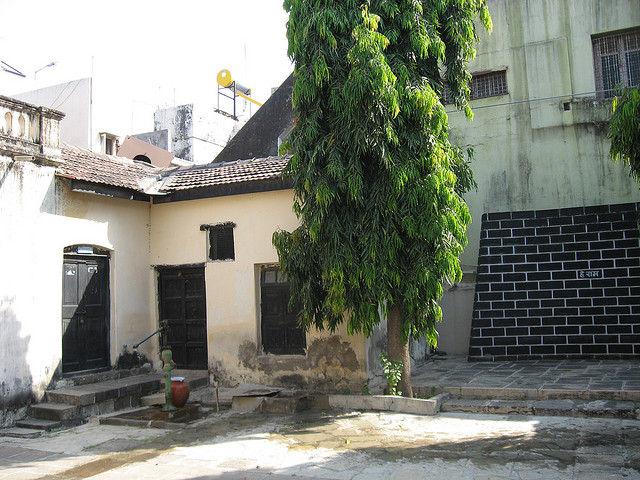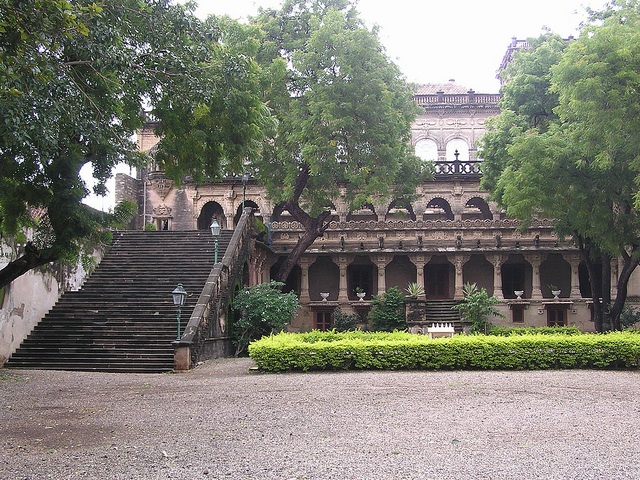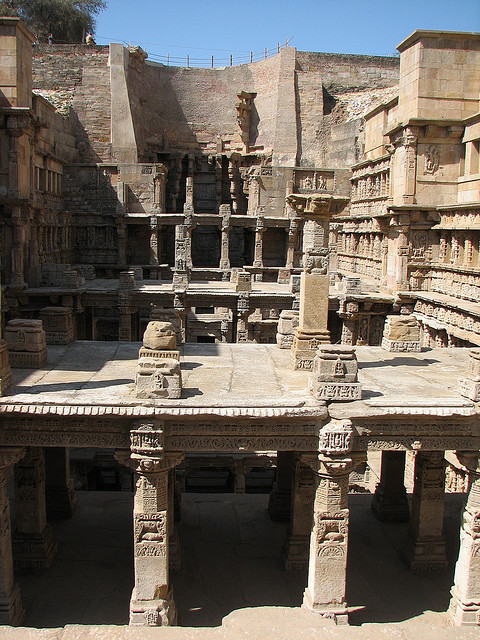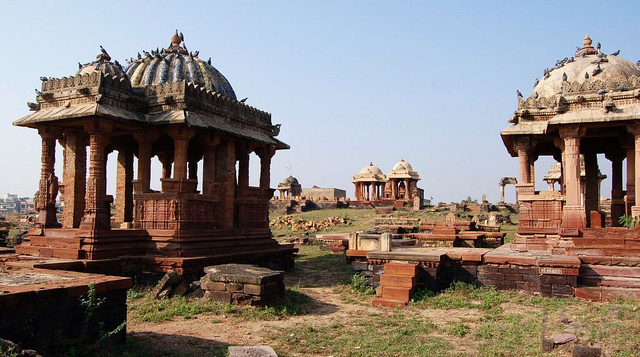Kaba Gandhi No Delo
Kaba Gandhi No Delo is the ancestral home of Mahatma Gandhi. It now houses the Gandhi Smriti, a permanent exhibition of Gandhiji's items.

Kaba Gandhi No Delo is the ancestral home of Mahatma Gandhi. It now houses the Gandhi Smriti, a permanent exhibition of Gandhiji's items.

It is a three storey summer pavilion built by Rana Sartanji, constructed in Rajput architectural style amidst sprawling gardens. There are pillars adorned with the images of musicians, profusely carved foliated arches and a single dome at the top. It reminds the bygone days, when Rana Sartanji used to sit under this pavilion and compose poems in Braj language.
Permission to see the palace may be obtained from the Secretary, Maharana of Porbandar.
Huzoor Palace is a mammoth palace situated at the edge of Marine Drive. It is a European structure overlooking the sea, adorned with sloping roofs, huge windows, sprawling gardens and carved fountains.
Darbargadh is the fortified palace of the city. It was built by Rana Sartanji and has a huge stone entrance, with high turrets and massive wooden doors. The splendid palace is one of its kinds in the whole state. The nearby edifices on the left of the entrance resemble large mansions with courtyards and intricately carved wooden elements.

During the period of the Solanki or Chalukya , the stepwell called the Rani ki vav, or Ran-ki vav (Queen’s step well) was constructed. It is a richly sculptured monument.
It is generally assumed that it was built in the memory of Bhimdev I (A.D. 1022 to 1063) son of Mularaja, the founder of the Solanki dynasty of Anahilwada Pattan in about 1050 A.D. by his widowed queen Udayamati.
It was probably completed by Udayamati and Karandev I after his death. A reference to Udayamati building the monument is in the 'Prabandha Chintamani' composed by Merunga Suri in 1304 AD.

Rani Udaymati Vav is an architectural wonder of Gujarat. It is one of the largest step wells of the state. The vav was constructed by Queen Udaymati in 11th century, in the loving memory of her Husband, King Bhimdeva I of the Chalukya Dynasty. The well is beautifully adorned with 800 stone sculptures and reliefs. One can see the impressive images of Hindu Gods, their incarnations and their consorts. The artistic and architectural majesty of the well is rarely to be seen elsewhere.
The Langhanaj locality of Mehsana is an interesting place. It is an excavation site, where 14 fossilized skeletons and monoliths were unearthed. The locality bears evidence to the life of early man of Langhanaj. It bears close affinity with the East Africans.
The Royal Chhatris are monuments of Red sandstone built by Rao Lakha in the 18th century. The main chhatri has an artistically carved roof supported by decorated pillars.
Swami Narayan Temple (Old): It is a beautiful temple built by Gangabai (daughter of Jethi Ghela Trikamji) in memory of her mother-in-law.

Kachchh stands on the ancient land mass that spawned civilisation two thousand five hundred years ago. Discovery of Dholavira, Kotdi. Shikarpur, and so many other prehistoric sites is a testimony to the antiquity of this land. However the jewel in the crown is Dhotavira with its twin mounds that date back to 3000 B.C. Dholavira is presumed to be amongst the largest Harappan settlements so far identified in the subcontinent today. Besides prehistoric sites so many other historic sites dot Kachchh that are a treat. So do not miss a visit to the following places.